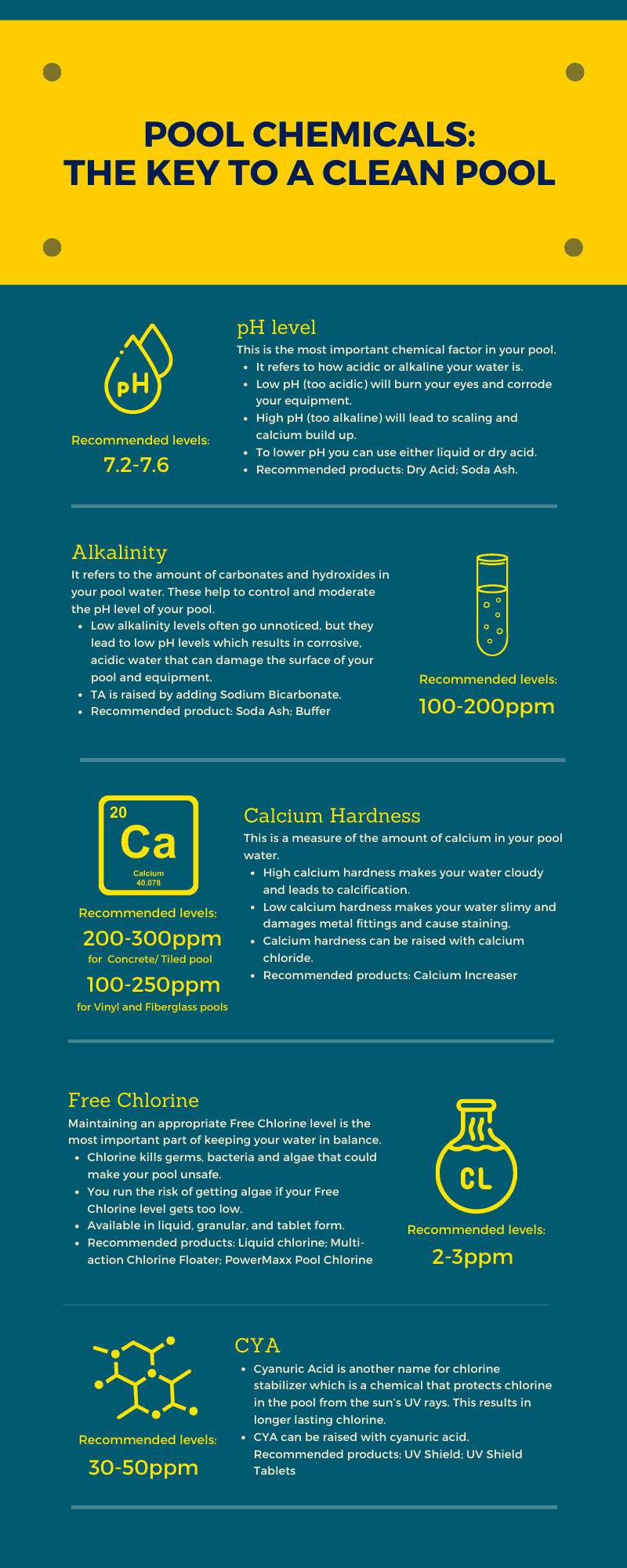Mastering Chlorine Management for Pool Owners
If you’re new to pool ownership, mastering chlorine management is a vital step in maintaining a clean and healthy swimming environment. While the initial learning curve of managing chlorine levels might seem daunting, it’s essential to control the balance between too little and too much chlorine. Accurate chlorine measurement and application will ensure a sanitized, algae-free pool, and it’s essential to hone these skills early on.
Feeling uncertain during your initial experiences is perfectly normal. Take the time to educate yourself about chlorine management; doing so will empower you to care for your pool effectively and confidently.
Understanding the Role of Chlorine
Chlorine is a cornerstone chemical in pool maintenance, crucial for preventing bacteria spread and ensuring swimmer health. When used correctly, chlorine kills harmful germs present in pool water, making it a critical component in both public and private swimming pools. Proper chlorine application minimizes health risks for swimmers, providing peace of mind and a safe recreational space.
By keeping chlorine levels optimal, you reduce the likelihood of swimmer illness or the transmission of water-borne diseases. Educating yourself on chlorine’s role will profoundly enhance your pool maintenance efforts.
Determining the Right Chlorine Level
There’s no one-size-fits-all answer for how much chlorine your pool needs; it varies based on numerous factors. New pool owners should regularly test chlorine levels and adjust accordingly. Testing kits, available at pool supply retailers or online, are indispensable tools for this task. Factors like body lotions, urine, and weather conditions can alter chlorine levels, making regular monitoring vital.
With these kits, you can accurately measure chlorine levels and promptly address any imbalances, ensuring your pool remains a safe haven throughout the swimming season.
Understanding Chlorine Costs
Recently, chlorine prices have fluctuated due to market conditions, but understanding your purchasing options can help you manage costs effectively. Liquid chlorine and chlorine tablets are the most popular and economical choices. Expect to pay between $7 and $10 for a two-gallon jug of liquid chlorine, whereas a 25-pound bag of tablets might cost between $60 and $70.
Knowing these options allows you to choose the best fit for your pool’s needs and budget. Explore these choices to keep your maintenance both effective and economical.
Benefits of Liquid Chlorine
Many pool owners and service professionals advocate for liquid chlorine due to its straightforward application and environmental considerations. It can be added directly to the pool multiple times a week using a liquid feed system, making it a favorite for many seeking a pure and eco-friendly sanitizing solution.
Liquid chlorine stands out as a cost-effective choice that enhances pool water safety. Notably, it contains no Cyanuric Acid, which can build up and reduce chlorine efficiency. For new homeowners, using liquid chlorine not only maintains water quality but also helps preserve the condition of pool surfaces, minimizing unnecessary repairs and expenses.
Grasping the Chlorine Breakpoint
The concept of the chlorine breakpoint is essential for understanding pool chemistry. Reaching this breakpoint means sufficient chlorine has been added to meet the demand, effectively disinfecting the water. Avoid haphazardly adding chemicals; instead, calculate and dissolve the necessary amount of chlorine in a bucket before introducing it to the pool.
For further guidance on pool chemicals, or if you’re planning future pool installations, consult PoolRepair.fyi for expert advice and high-quality pool accessories made in the USA. Stay informed and vigilant to maintain a healthy and welcoming pool environment.
#PoolMaintenance #ChlorineManagement #HealthyPools #SanitizedSwimming #PoolRepairExperts


